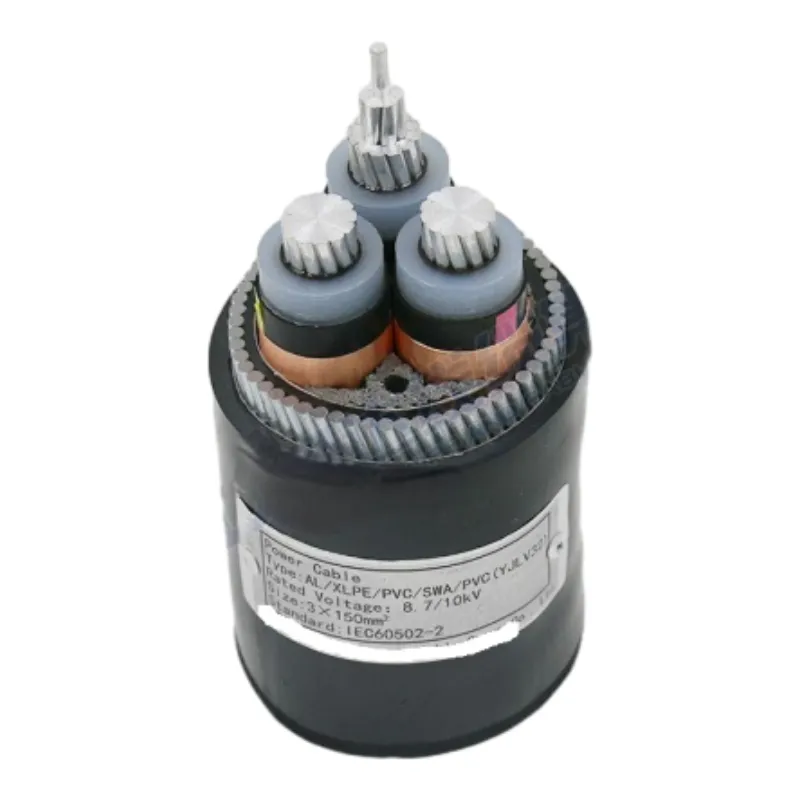Nov . 10, 2024 11:31 Back to list
Understanding Copper Wire and Cable Applications in Modern Electrical Systems
The Importance of Copper Wire and Cable in Modern Industries
Copper wire and cable are indispensable components in various industries, forming the backbone of electrical and electronic systems. From powering our homes to fueling technological innovations, copper’s unique properties make it the preferred choice for conducting electricity, whereas its versatility makes it an essential material in both traditional and modern applications.
The Properties of Copper
Copper is a highly conductive metal, boasting exceptional electrical and thermal conductivity. It has a conductivity rating of 59.6 × 10⁶ S/m, which is second only to silver. This high conductivity enables copper wires to carry electric current with minimal energy loss, making them efficient for power transmission. Additionally, copper is malleable and ductile, allowing it to be drawn into thin wires without breaking, which is crucial for applications requiring various wire gauges.
Copper's resistance to corrosion ensures a longer lifespan, thus reducing maintenance costs. It is also non-magnetic, which minimizes interference with electrical signals, making copper-wire systems particularly effective in sensitive electronic devices.
Applications of Copper Wire and Cable
Copper wire and cable are used extensively across multiple sectors
1. Residential and Commercial Electrical Systems Copper wiring is found in the electrical systems of homes and buildings. It is used for circuits, outlets, and lighting. Due to its high conductivity, copper wire can handle the electrical demand of modern appliances efficiently, ensuring safety and reliability.
2. Telecommunications Copper cables, particularly twisted pairs, are fundamental in telecommunications. They transmit voice and data signals over long distances. Technologies like DSL (Digital Subscriber Line) and traditional telephone lines have utilized copper for years, showing its effectiveness in the telecommunications infrastructure.
3. Transportation In the automotive industry, copper is used for wiring and electrical connections. The increasing shift toward electric vehicles (EVs) is driving demand for copper batteries and wiring systems, as they provide the necessary conductivity for high-performance electric powertrains.
copper wire and cable

4. Renewable Energy With the growth of renewable energy sources such as solar and wind, copper’s importance has been amplified. Copper wiring is essential for solar panel installations and wind turbine connections, facilitating efficient energy transfer and enhancing the overall performance of renewable energy systems.
5. Industrial Applications Copper wire and cable are also widely employed in industrial machinery, motors, and generators. They are used in electric heating, electromagnets, and manufacturing equipment where reliable current flow is paramount.
The Future of Copper in Technology
As technology advances, the demand for copper wire and cable continues to rise. With the advent of smart cities and the Internet of Things (IoT), the need for robust and efficient wiring systems is critical. Smart devices require interconnected systems where copper's reliability and conductivity come into play.
Moreover, the growing trend of wireless technology does not diminish the need for copper. On the contrary, even wireless communication systems still rely on copper for backhaul connections and other infrastructure components. The blend of wireless and wired technologies will ensure that copper maintains its relevance.
Environmental Considerations
While the demand for copper is growing, it is essential to consider its environmental impact. Mining and refining copper can have deleterious effects on local ecosystems. However, recycling copper can significantly mitigate these impacts. Copper is one of the most recycled materials in the world, with over 80% of copper being recyclable without losing its properties. This recycling contributes to sustainability and reduces the need for new mining operations.
Conclusion
Copper wire and cable play a vital role in modern society, powering homes and industries alike. Its unique properties make it an irreplaceable material in electrical and electronic applications, and as technology continues to evolve, copper will undoubtedly remain at the forefront of innovation. While we acknowledge its environmental impacts, promoting responsible mining practices and efficient recycling methods will ensure that this valuable resource is utilized sustainably for generations to come. As we navigate through a rapidly changing technological landscape, the importance of copper wire and cable will only continue to grow.
Share